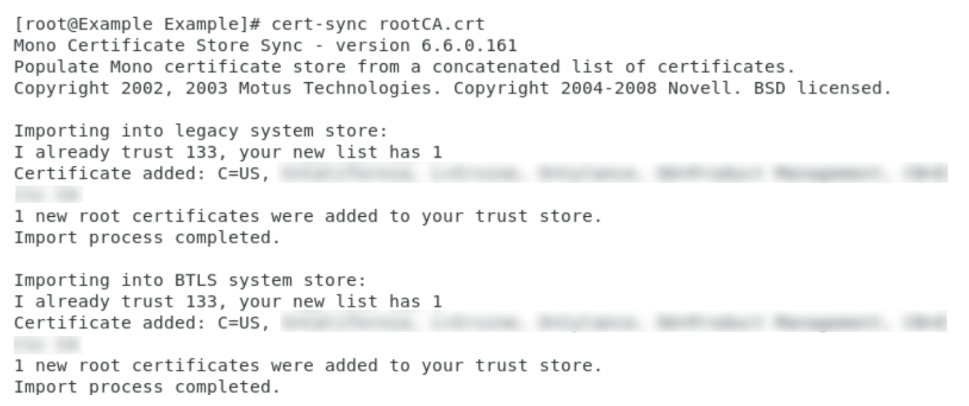Mono for Linux steps
The following steps use a CentOS 7.6 virtual machine with a user logged in as the root user.
- Follow the instructions on Mono Project's website: https://www.mono-project.com/download/stable/#download-lin. Install either themono-develormono-completepackage. Either mono package will allow you to complete the steps below.
- Open Terminal and change directories to the location where your certificate is stored.The certificate needs to be in PEM format.The certificate required is the one used to sign the certificate and key for yourCylanceHYBRIDvirtual appliance.
- After changing directories, enter the cert-sync command:cert-sync <YOURCERTIFICATE>where <YOURCERTIFICATE> should be replaced with your certificate.Example Output: cert-sync rootCA.crt

- Mono stores the synced certificate to/usr/share/.mono/new-certs/Trust.When you install Mono for Linux, Mono will automatically insert its own certificates into the/new-certs/Trustdirectory. Because of this, it may be confusing which mono certificate is your newly synced certificate.To locate your target certificate, you can usels -ltrto display the latest modified file at the bottom of the Terminal output. You can use your method of choice to differentiate your target certificate versus the other previously inserted certificates.Example:The red boxed certificate is the certificate that was synced using the above steps. All other certificates were inserted upon installation of Mono.

- On each Linux device that will use the appliance, create the following directory:/usr/share/.mono/new-certs/TrustThis does not install Mono on the target machine; you are just manually creating the directory.Please be aware that there is a period, ".", in front of ".mono".Example method to create the directory:mkdir -p /usr/share/.mono/new-certs/Trust
- Copy the synced certificate to the directory you created in the previous step for all target Linux machines.